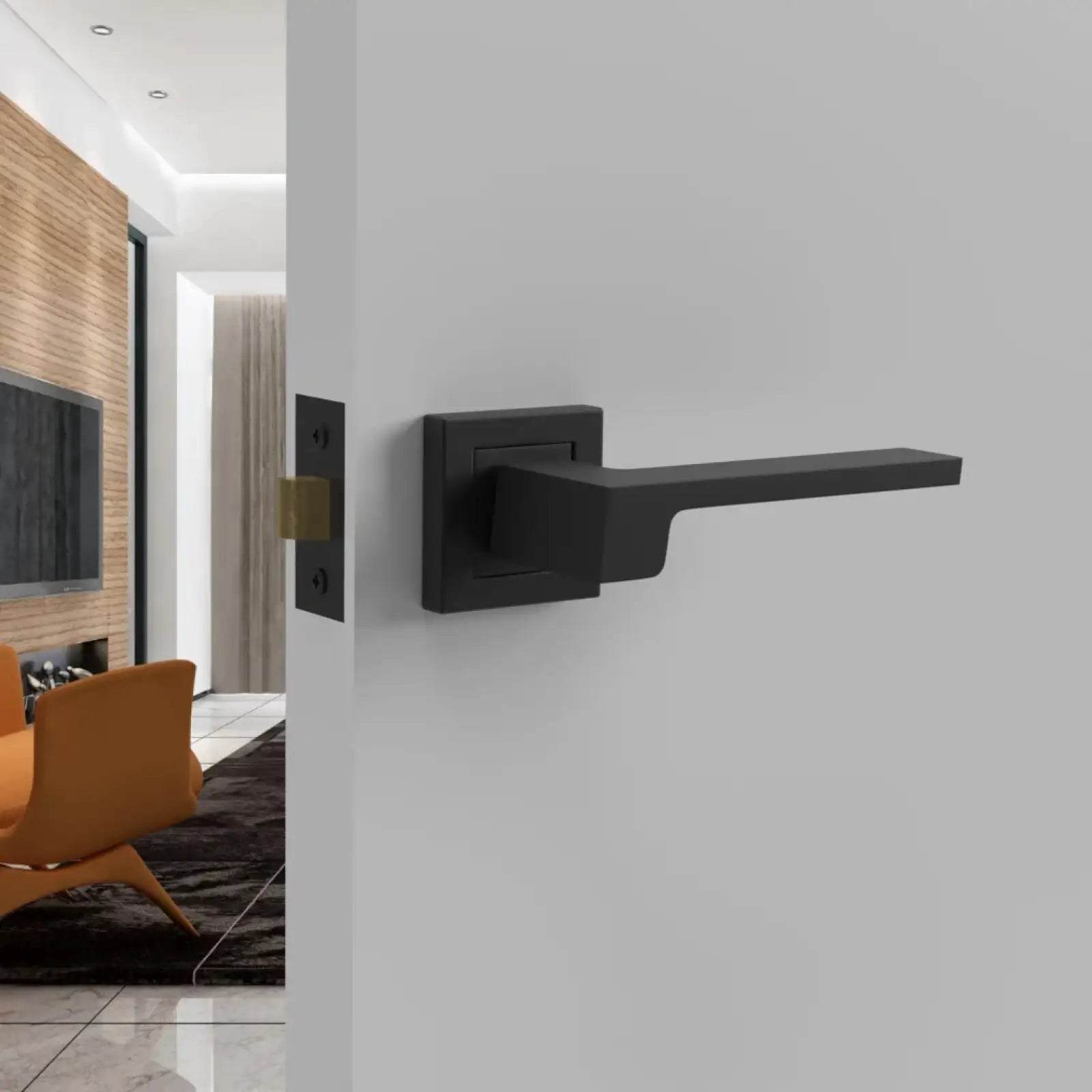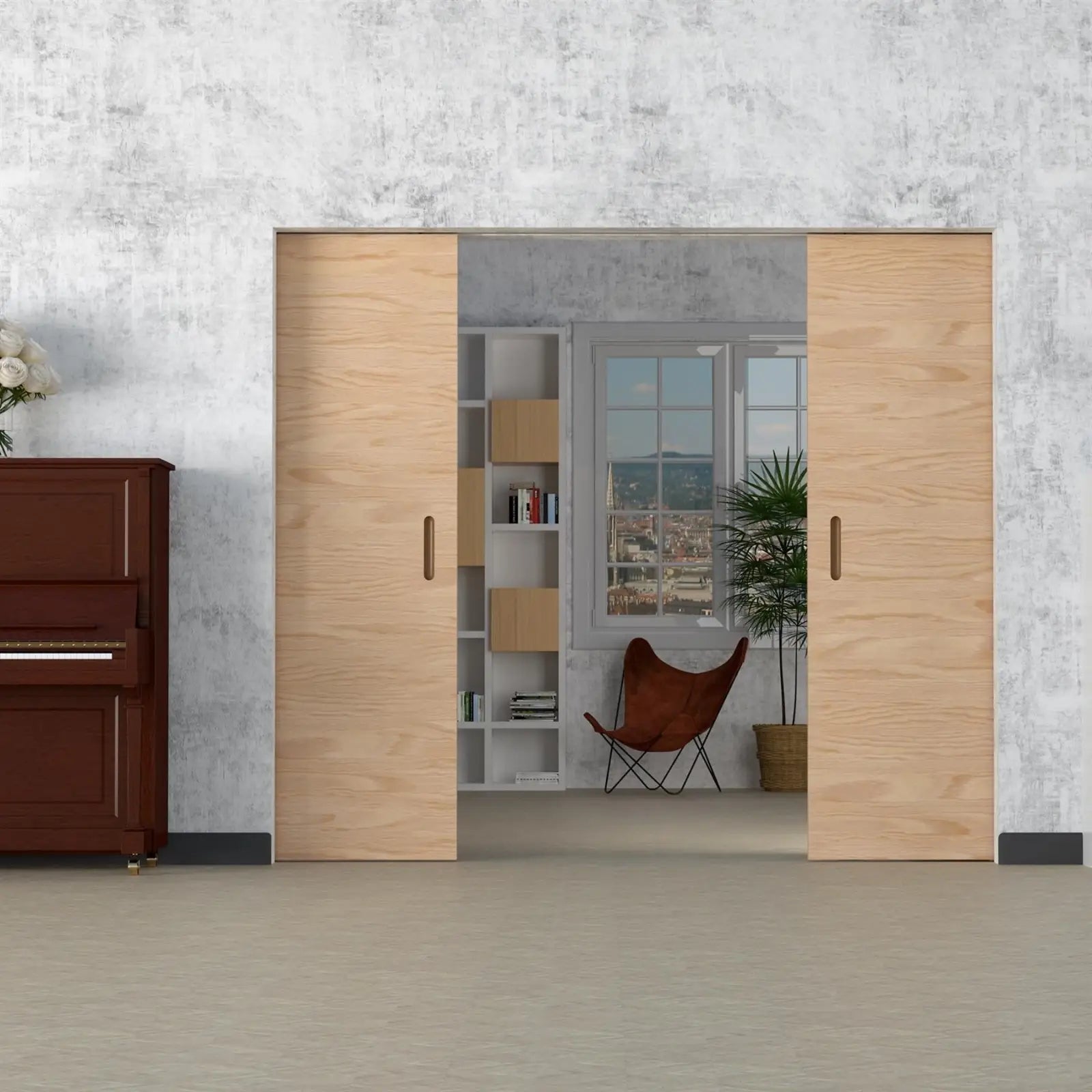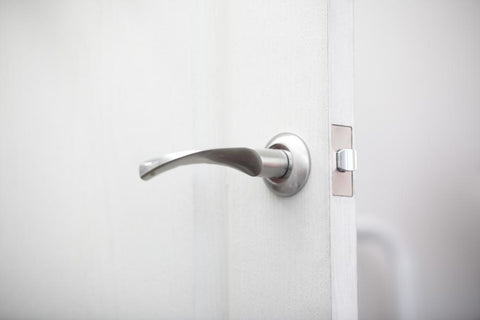A Comprehensive Glossary of Terms for Door Accessories
Understanding all the door accessories and fittings can be complicated when you start shopping in the market. There’s a plethora of terms and jargon and for a layperson, they can become puzzling.
That’s we have compiled this glossary of terms for your convenience. Keep reading to understand the various terms involved in door hardware that can make your product selection much easier.
A
Active Door
This is the door (or the leaf) in a pair of doors or a double-door set that is opened first and the one to which the lock is fitted.
Anti Friction Bearing
This is a bearing with the ability to effectively reduce friction.
Anti Friction Latch Bolt
The latch bolt of a lock that is designed to reduce friction by means of a small device is called an anti friction latch bolt. A small trigger attached to the bolt comes in contact with the strike and does a lever action to cause the bolt to get depressed
Auxiliary Bolt
This is an additional bolt that gets activated by means of a strike when you close the door.
B
Backplate
It is a stamped or forged metal plate on a door handle, often rectangular, onto which levers or knobs are mounted for fixing to the surface of the door.
Bathroom Lock
It is full height lock that consists of a deadbolt being operated by a square spindle (the usual size of the spindle is 5mm). This complete lock-case is a combination of a spring latch bolt and a thumb-turn deadbolt. The spring-latch allows for opening or closing the door from either side while the deadbolt enables locking the door from the inside.
Bathroom Deadbolt (Bathroom Turn and Release)
This is mostly tubular and works by a separate thumb-turn or ‘turn and release’ component that projects and retracts a deadbolt. Most bathroom deadbolts come with a 5mm follower but you can also find ones with 8mm followers.
Bolt
This is a generic term for a simple door locking mechanism consisting of a sliding metal bar that fastens the door. Some examples for bolts are surface bolts, barrel bolts, flush bolts, mortice bolts, etc. They come in various diameters, most common being M4 (4mm), M5 (5mm) and M6 (6mm).
Bolt-Through Fixings
This secures one handle or knob through the door on to the corresponding handle or knob on the other side of the door by means of a bolt and sleeve fixing.
Bolt-Through Holes
This locking mechanism uses small holes in a lock on one of the sides of the follower that allows fixing bolts to slide through the case for securing the handle or knob.
British Standard (Kite Mark)
This is the standardized stamp given to products that have been certified by BSI British Standards. BSI is responsible for assuring and regulating quality standards applied to a number of products. The Kite Mark or the logo indicates that the product has been tested by the BSI and passed its quality standards. There’s no grading system involved so a product either passes or fails. This is most relevant to external locks. For example, the BS3621:2007 standard is a mandatory requirement for theft-proof locks specified by Household Insurance providers.
C
Casement Fastener
This is a handle that secures a side-hinged or casement-style window.
Casement Stay
A simple lever or ‘stay’ to hold a side-hinged window open at a fixed distance by means of a peg or friction slide
Centres
It is the measurement between the centres of two points such as between a follower and the keyhole on a lock.
Cremone Bolt
A device applied on the door surface for locking the door or sash into its frame, top and bottom, by a turn of the knob or handle.
D
Deadbolt
A lock bolt that has no bevel or spring action and it is operated by a spindle or thumb-turn.
Deadlock
A lock created to be morticed into the door by means of a key from any side.
Door Holder
A device that holds a door open at one or more positions that the user selects.
E
Escutcheon
It’s a plate to cover the keyhole cut-out on a door. It comes in various styles, materials, and finishes.
Euro Profile
It’s a type of oversized cylinder lock shape that is very popular throughout the UK.
F
Follower
The part of a lock or latch with a square-shaped hole through which the spindle passes to operate the lock.
Forend
The forend or the faceplate is the visible part of the door lock mechanism once it has been fitted to the door.
G
Grub Screw
This is a small metal screw with no external head. It is usually fixed using a hexagon key and is typically used for fixing door handles to the spindle.
H
Heavy Sprung (Double Sprung)
This indicates that a superior quality spring was used in the lock or latch to return the lever or knob back to its place.
Hinge
Two plates fixed together by a pin and attached to the door on one side and its frame on the other. They serve as the door support and allow it to swing or move.
K
Keep
A lock striking metal plate also called a strike that is used to hold the latch in place.
Knob
A projecting handle or lever to operate the door lock.
L
Latch
A door locking mechanism that makes use of a sprung beveled metal handle. It can be flat or tubular.
Lever
This is a small device inside a mortice lock that swings on the pivot and acts as a detainer. The higher the number of levers in a lock the higher will be the lock security.
Lever Privacy (Privacy Lever)
A handle-on-backplate variation that is complete with an emergency and thumb-turn release.
M
Mortice
A hole made into a door or window to attach the lock or latch mechanism into the door.
N
Night Latch
This is a latch bolt that’s withdrawn using a knob on the inside and key on the outside. It’s available in a variety of finishes and styles.
Nozzle
This is a circle-shaped projection present on a lock that contains the keyhole. It doesn’t fit the escutcheon, rather it projects through a hole in the door.
O
Old-English Style Padlock
This is the traditional padlock that uses conventional lever mechanism.
One-Way Action
This is a latch in which the spindle follower can only turn in a unidirectional manner. It works fine for lever handles but not the ideal choice with unsprung knob furniture where you may wish the knob to be turned in any direction.
Oval Profile
This term is very widely used throughout the UK. It refers to be a cylinder lock shape that goes in an oval-shaped cut-out for door handles.
P
Panic Latch
This is a one-point latch fastener used in emergency exit doors. A horizontal bar controls the latch fastener and opens the latch under pressure.
Passage Set
This term is commonly used to describe a latch set with handles on each side of the door but without any locking function. It’s commonly used for hallway doors, laundry room doors, etc.
Patio Lock
A lock designed with a turn button or push button placed inside to lock the outside handle. When locked, you cannot enter it from outside using a key.
5 Pin/ 6 Pin/10 Pin
This refers to the number of pins used in a cylinder lock mechanism. The greater the number of pins used, the more secure the lock will be.
Pocket Door
This is a type of door that’s installed on a sliding track. It slides in and out of a hollow space in a wall. These doors are usually used to free up empty space in a room by eliminating the need of space to maintain the action of swinging door.
Powder Coat Finish
This is a polyester-based coating for door hardware that provides an attractive and corrosion-resistant finish. There are a number of advantages of using powder coating rather than conventional paints. It is tougher and needs low maintenance. It’s idea for all iron monger applications.
Privacy Variation
This is a type of handle-on backplate variation that works similar to lever bathroom variation with thumb-turn and emergency release function. However, the thumb-turn on this variation does not operate a lock mechanism. Instead, it keeps the handle lever from moving.
Pulleys
Pulleys are a grooved wheel on an axel fixed in a frame for a rope or cord to slide over it. There are different methods of fixing single and double pulleys.
Profile
This term is used to describe the shape of a key hole. It can be either be an oval profile, standard profile or euro profile.
Projection
This is the distance measured from a door to the point of the door handle that’s projecting outward. This is important to note when designing the overall door function.
Q
Quadrant Stay
This is a type of a rigid stay used to restrict the movement of a bottom hinged window.
R
Rack Bolt
This is a type of a window or door bolt that works on a toothed rack mechanism. It is operated by secured key or turn. The key or turn behaves like a pinion to create a rack and pinion action.
Rebate Set
This is an extra bracket that lets a lock or latch to get attached onto a rebated door (a door where the leading edge is stepped).
Reversible Lock
A lock that comes with parts which can be easily adapted to enable the lock to suit a door with either hand, that is, opening in or out.
Rim Latch/Lock
A conventional lock or latch mechanism that is hidden in its own case and attached to the surface of the door facing inside rather than being morticed into the door frame. You can operate it by a rim door knob that is available with or without a lock mechanism.
S
Safety Mode
Safety mode allows the lock to get opened from inside without having to use a key. However, on the external side, you will need the key to gain access.
Sashlock
An entire lock case created to be morticed into the door frame. The follower spindle (usually 8mm) allows the handle to work the latch and a key is used to operate the lock. It is available in various key hole profiles and at different centres.
Sash Window
This is a traditional-style window that operates vertically
Shoot
A term used to refer to the movement of a bolt on a lock also called the throw on a dead bolt.
Spindle
This is a square-shaped metal bar passing through the door to connect the knobs or handles together and operates the locking mechanism.
Sprung
This term indicates that a door knob is fitted using a spring in the backplate and returns the lever once it is released.
Standard Profile
This is a type of keyhole shape that has a small sized hole for a standard UK stem key to be inserted into it.
Strike Plate
This refers to a plate that’s fits to the door frame to hold a lock bolt or hatch when the door shuts. They are commonly available with complementing lock or latch but can also be found as a spare part.
T
Tubular Bolt
This is a bolt having a tubular case.
Turn Snib
This refers to a device that is used to lock, retract or unlock the lock bolt by means of rotation.
v
Vestibule
A hall or lobby next to the entrance door of a house and from which other doors open to various rooms.
W
Wardrobe Lock
This is quite similar to a cabinet lock having a dead bolt that is operated by a key. It may also use a spring bolt.





